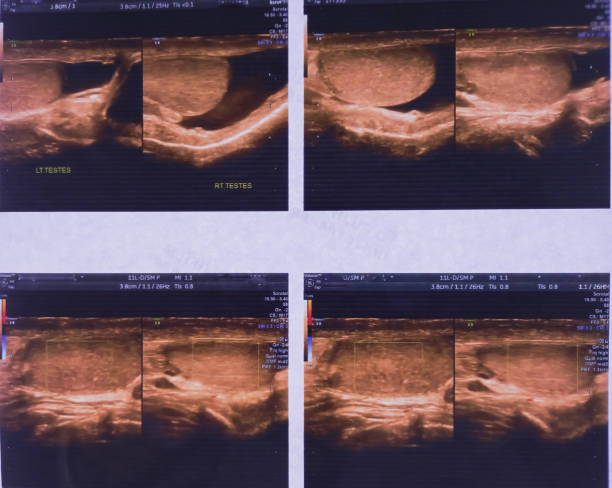19 Dec 2025
Age Specific Related to Psoriasis in Amritsar


Dr. Rishu Baweja
06 Sep 2025
Call +91 80788 80788 to request an appointment.
Hernias are a common medical condition that can cause discomfort and, when left untreated, may lead to more severe complications. For those in Punjab, understanding the different diagnostic tools available, such as ultrasound, CT scan, MRI, and X-ray, can help in choosing the most effective pathway to a solution. At Livasa Hospitals, with centers in Nawanshar, Mohali, Khanna, Hoshiarpur, and Amritsar, we provide a comprehensive guide to the latest imaging technologies essential for accurate hernia diagnosis.
A hernia occurs when an internal organ or tissue protrudes through a weakness in the muscle or surrounding tissue wall. The most common types include inguinal, femoral, umbilical, and hiatal hernias. While hernias can affect anyone, risk factors include obesity, heavy lifting, chronic coughing, and a family history. Symptoms often include a noticeable bulge, discomfort, and pain, especially when bending over or lifting.
At Livasa Hospitals in Punjab, we emphasize the importance of early diagnosis and treatment to prevent potential complications such as obstruction or strangulation of the herniated organ. Our team offers advanced diagnostic and treatment services, addressing the condition with a patient-centered approach.
Hernia diagnosis is confirmed by a combination of physical examination and imaging studies. Here in Punjab, at Livasa Hospitals, our diagnostic arsenal includes:
Ultrasound, a preferred first-line diagnostic tool in Punjab for hernias, uses sound waves to produce images of organs and tissues. This technique is particularly valuable in evaluating groin hernias and their impact on adjacent blood vessels or organs. The procedure is painless, quick, and does not involve radiation, making it ideal for repeated scans if needed.
Patients visiting Livasa Hospitals can be assured of expert evaluations using advanced ultrasound equipment, ensuring accurate and timely diagnosis.
A CT Scan offers a comprehensive look at the body's structure using X-rays to create detailed cross-sectional images. It's particularly advantageous in diagnosing complex hernias that may not be evident on ultrasound. CT Scans can identify hernias in the abdominal wall and are often used when complications are suspected.
At Livasa Hospitals throughout Punjab, our state-of-the-art CT imaging facilities help in providing thorough evaluations for patients with complex hernia presentations.
MRI, or Magnetic Resonance Imaging, is used less frequently but is invaluable for diagnosing hernias involving muscle or connective tissue. It provides high-definition images without radiation, making it safe for all patients, including pregnant women. MRIs are especially useful in diagnosing hernias that are not visible externally or have unusual characteristics.
For those seeking advanced hernia diagnosis in Punjab, Livasa Hospitals offers MRI scanning to ensure no detail goes unnoticed.
While X-rays are not typically used for primary hernia diagnosis, they play a supporting role in assessing complications such as bowel obstruction or other internal issues associated with hernias. X-rays are quick and readily available, making them a practical preliminary tool in emergency settings.
| Diagnostic Tool | Usefulness | Radiation Involved | Ideal For |
|---|---|---|---|
| Ultrasound | High for soft tissue examination | No | Inguinal and umbilical hernias |
| CT Scan | Detailed cross-sectional view | Yes | Complex abdominal hernias |
| MRI | High-resolution imaging | No | Intricate tissue involvement |
| X-ray | Basic structural view | Yes | Bowel obstruction complications |
Diagnosing a hernia accurately can lead to effective and timely treatment, preventing complications that can arise from delayed intervention. In Punjab, Livasa Hospitals offers advanced diagnostic tools and expert care to ensure each patient receives tailored treatment based on their specific needs. Whether through ultrasound, CT scan, MRI, or other imaging options, Livasa's commitment is to deliver comprehensive hernia care solutions.
For those looking to explore their diagnostic options or require expert hernia surgery, visiting any of our centers in Nawanshar, Mohali, Khanna, Hoshiarpur, and Amritsar will ensure you are well cared for. Book your appointment today by visiting our website here or call us at +91 80788 80788.
+91 80788 80788
Livasa Healthcare Group Corporate Office,Phase-8, Industrial Area, Sector 73, Sahibzada Ajit Singh Nagar, Punjab 160071
livasacare@livasahospitals.in
| Mohali | +91-99888 23456 |
| Amritsar | +91-99887 49494 |
| Hoshiarpur | +91-99883 35353 |
| Nawanshahr | +91-75081 82337 |
| Khanna | +91-98888 05394 |